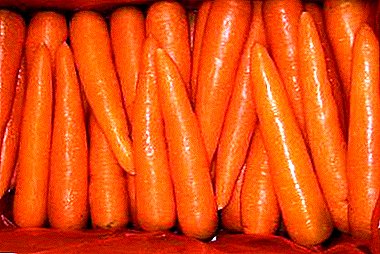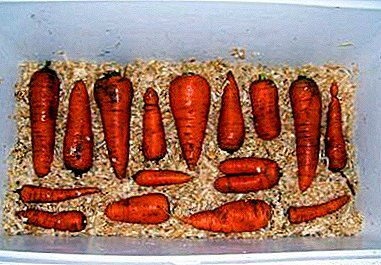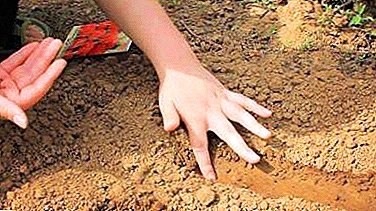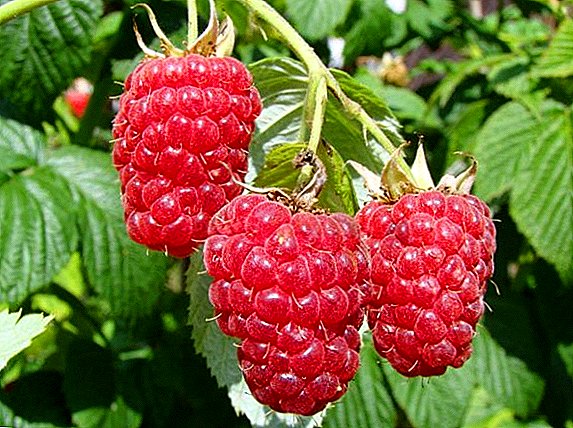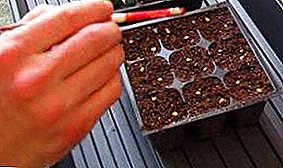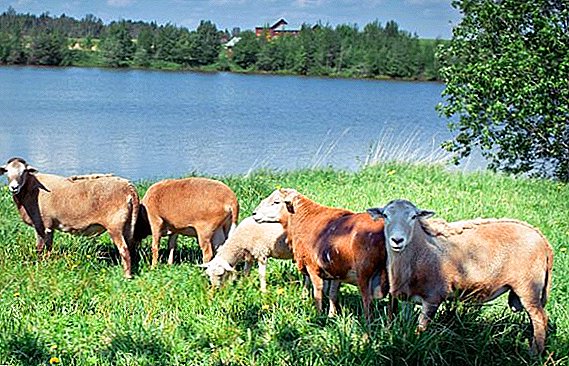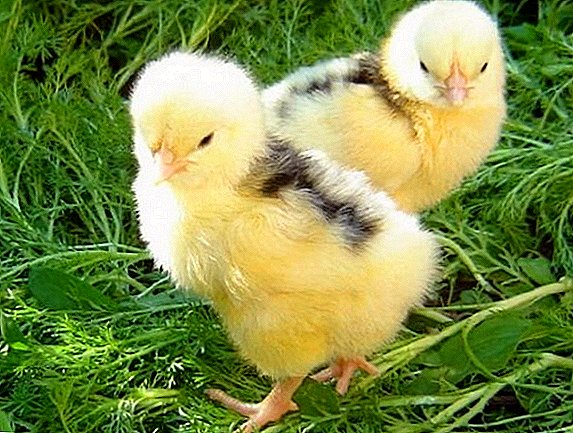 Biting in birds is a deviation in behavior that occurs as a reaction to adverse external conditions. Gnawing can occur not only in adult chickens, but also in chickens.
Biting in birds is a deviation in behavior that occurs as a reaction to adverse external conditions. Gnawing can occur not only in adult chickens, but also in chickens.
Usually, the weakest individual becomes the victim of the bite, while at the same time aggression from one attacking bird can be quickly transmitted to the rest of the birds, which leads to a massive attack on the victim. Often, pecking leads to significant injuries, bloody wounds, damage to internal organs and even death.
If you do not take timely action, you can lose a significant part of the population. Today we will talk about what can cause such abnormal behavior in young animals, and what measures will help to eliminate it.
The reasons
In poultry farming, the aggressive behavior of chickens, in which they pluck feathers, peck each other up to blood, is called pterophagia. In the overwhelming majority of cases, pecking does not occur on its own, such aggressive behavior always has a root cause.
Important! If time does not eliminate the root cause of biting, more than half of the young stock may be injured. An infection can quickly join the wounds. In the worst case, the chickens slander each other to death.
Various adverse factors can provoke aggression among chickens, ranging from lighting in the house to parasitic diseases. Only in rare cases, pecking manifests itself as a feature of a chicken that does not depend on external circumstances.
Video: Chickens Chuck If the tendency to exaggerate manifests itself at a very early age, it usually only gets worse over time. Such chickens are rejected early.
We recommend reading about how to determine the sex of a chicken, how to transport day-old chickens, how to raise chickens after an incubator, and also how to correctly walk chickens.
Malnutrition
Usually this is the main cause of pterophagia and cannibalism in birds. This factor is especially relevant for chickens, whose body is actively growing and needs good nutrition. Analyze what you feed your birds. If you prepare mash potatoes yourself, chances are high that chickens do not receive enough vitamins or minerals.
Calcium, which is used to build a skeleton, is especially important for chicks. It is also impossible to prevent protein deficiency. A shortage of beneficial substances may occur with a meager amount of animal products in the diet.  If you feed the youngsters with whole grain, and not crushed, pecking may also occur, because the assimilation and digestion of whole grains is somewhat slower and worse.
If you feed the youngsters with whole grain, and not crushed, pecking may also occur, because the assimilation and digestion of whole grains is somewhat slower and worse.
Lighting errors
The second most frequent reason is snapping. Not only the mood and behavior of the bird, but also its appetite, growth, and in the future - productivity depend on the amount of light. Although little chickens need a lot of light, but its brightness must always be adjusted.
Excessively bright light causes increased excitability of birds, causes a feeling of fear and anxiety, as a result, the level of aggressiveness increases.
Crowding
When crowded content broken poultry microclimate. At the same time, anxiety, excitability, aggression are also increasing.  Chicks may not have normal access to feeders and drinkers, sufficient space for movement. Pterophagy can also occur in the absence of opportunities for birds to walk, especially for active, mobile, curious breeds that are in dire need of physical activity.
Chicks may not have normal access to feeders and drinkers, sufficient space for movement. Pterophagy can also occur in the absence of opportunities for birds to walk, especially for active, mobile, curious breeds that are in dire need of physical activity.
Learn more about what broiler chickens look like, how to feed them properly, why broiler chickens die, what should be included in a broiler chick box, how to treat non-infectious diseases in broiler chickens, and what to do if broilers sneeze and wheeze.
Other reasons
Food, lighting and crowding are not the only reasons for biting. After all, virtually any change in housing conditions that causes stress to chicks can be the cause of aggressive behavior.
So, the following factors can provoke cracking:
- changes in diet, abrupt change of feed;
- introduction of new chickens in the already formed herd;
- a large number of roosters in the herd, which by nature are more aggressive;
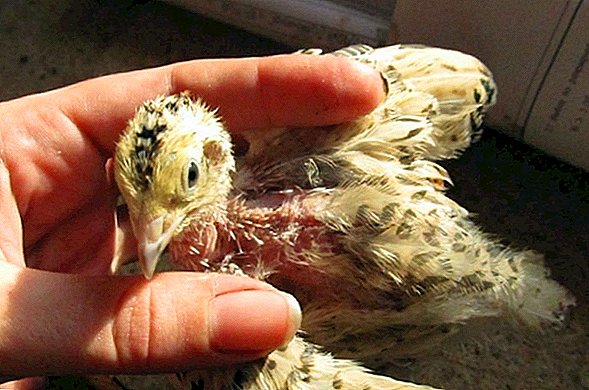
- violations of temperature conditions of maintenance (this also includes problems with heating and the difference between night and daytime temperatures);
- infection with skin parasites (ticks, fleas, lice);
- problems with the ventilation system, as a result - the dustiness of the house;
- technical work in the hen house;
- constant noise over 60 dB;
- features of the nature of the chicken, genetic predisposition.
Did you know? Chickens with brown plumage are less prone to pterophagy than white birds and representatives of meat breeds, which is explained by the genetic predisposition of the latter.
What to do
If you find slander can not waste time - you need as soon as possible to take measures to eliminate the cause and save the livestock of chickens. To do this, you have to analyze the conditions of detention and make the appropriate adjustments. 
To shed
First of all, it is necessary to deposit the injured individuals in a separate room. It would also be useful to observe the behavior of the birds in order to calculate the most active aggressor and provocateur biting.
It can also be temporarily deposited and, if the aggression does not stop, such individuals are rejected. Use a net for catching older chicks, as manual fishing can be too stressful for birds.
It will be helpful for you to read about how to treat and prevent chickens' diseases, how to treat diarrhea in chickens.
Handle wounds
It is necessary to inspect all livestock to find and process damaged skin. Such a measure will help to avoid infection, which often ends in death for birds. 
For the treatment of wounds, you can use such tools:
- Potassium permanganate (potassium permanganate). For the treatment of wounds need to prepare a 0.5% solution.
- "Furacilin". Effective antimicrobial agent for treating wounds, the solution is prepared at the rate of: powder 1 crushed tablets per glass of water.
- "Betadine". For the treatment of wounds, a solution in the ratio of 1:10 is used (Betadine + water).
- "Miramistin". Antiseptic is used for wounds of various localization and origin. For processing the drug is applied to a gauze swab.
- "Chlorhexylin". The drug is effective against a large number of bacteria. A gauze bandage soaked in liquid should be applied to the affected area.
Important! You can not use for the treatment of wounds antiseptics containing alcohol! When using any means it is important to ensure that they do not fall on the eyes and beak, so the wounds on the head are treated with extreme caution.
- Hydrogen peroxide. Simple, effective and affordable means for washing wounds.

After treatment, it is necessary to apply a wound healing agent:
- "Baneotsin". This is a combined antibacterial drug. Apply on the damaged areas need 2 times a day for 5-7 days.
- "Eplan". Very effective drug with bactericidal, analgesic, regenerating properties. For minor wounds, apply the cream several times a day. If the area of damage is extensive, it is recommended to apply gauze compresses and fix the bandage. They need to be changed daily.
- Birch tar. Time-tested, effective and inexpensive means for healing wounds. Apply to damaged areas several times a day until healing.
- Olazol. This tool is used when entering the wound infection. Pre-wound is treated, sprayed and kept on the wound for 3 minutes, the remains are removed with a gauze pad.

Change lighting
Properly organized lighting is an effective tool for controlling behavior, health and well-being, appetite, productivity and movement of birds.
At different stages of development, chicks need a different amount of light:
- from birth to 7 days the light should be around the clock;
- after 7 days, daylight is reduced to 18-20 hours;
- up to 4.5 months, the duration of daylight hours is reduced by 1 hour weekly, by the specified date it should be 8-10 hours.
Important! The lighting level should be in the range of 5-40 Lx. With a lower rate in birds, vision deteriorates, and if it is too high, stress, anxiety and anxiety levels inevitably increase.
For laying hens it is best to use red light, and for broilers - green and blue hues. 
Adjust the microclimate
It is also extremely important to monitor the microclimate in the house. The room must be equipped with effective ventilation that will prevent dust and stagnation, as well as excessive levels of ammonia and carbon dioxide. Normal air circulation will reduce the risk of developing diseases.
If there is no ventilation in the room, it is necessary to arrange airing regularly. In addition, it is very important to monitor the level of humidity (in the range of 60-70%) and temperature (about +21 ° C for chickens). Do not allow sudden temperature changes.
We advise you to read about how to use an infrared lamp to heat chickens.
To do this, the house will have to install heating systems. Cleanliness is also the key to good health and well-being of birds. Therefore, do not forget to change bedding in time, clean out litter and litter.
Video: how to make ventilation in the hen house
Properly organize the space
When calculating the number of places for livestock, it is important to consider several factors: the age of the bird, the properties of the breed, the characteristics of the cage or house. So, on 1 square. m can easily accommodate up to 60 newborn chickens.
However, they are growing rapidly, and already at the age of 3 months, a maximum of 25 heads can be placed in the same area. However, when keeping broiler breeds of chickens, it is categorically forbidden to keep chickens in spacious cages, because in such conditions weight gain occurs very badly.
In this situation, it will be necessary to deal with the cracking by adjusting the food and microclimate in the house. For broiler breeds, the population density can be calculated in this way (per 1 sq. M): about 30 newborn chickens, up to 15 chicks of a month of age, about 6 chickens at the age of 2 months. 
Feed correctly
It is known that a balanced diet for all components can prevent many illnesses and health problems. It is especially important to organize competent feeding from the first days of life, when the chickens are formed immunity and the body is actively growing.
Did you know? The egg matryoshka is the name given to the egg that the hen laid in the British town of Waterluville. The egg was very large, it weighed about 200 g, so the farmer decided to videotape how he would make an omelet from it. However, when the egg was broken, protein, yolk and another normal egg of normal size spilled onto the pan!
Literally from the age of a week it is necessary to give vitamin and mineral supplements to feathers, but if you use combined feed, you can not do this.
Video: proper nutrition of chickens The basis of the diet of chickens:
- boiled shredded eggs in the first days of life;
- crushed grain (in no case should not give whole large grain up to 30 days);
- greens (nettle, alfalfa, clover);
- chopped vegetables (beets, zucchini, carrots, potatoes, etc.);
- animal protein (worms, larvae, insects, fish and meat and bone meal);
- fermented milk products (yogurt, low-fat cottage cheese).
Read more about what can be given to chickens, how to give them greens, how to feed chickens from the first days of life, and how to give nettles to broiler chickens.
It is also important to observe the frequency of feeding: at the age of 1-10 days, feeding occurs every two hours, then the number decreases to five. After two months go on 4-time feeding. Birds should always have access to clean, fresh, warm drinking water.  When keeping broiler and other meat breeds, it is recommended to use food specially developed for such types of hens. So you will have no risk to allow a shortage or excess of certain nutrients in the diet.
When keeping broiler and other meat breeds, it is recommended to use food specially developed for such types of hens. So you will have no risk to allow a shortage or excess of certain nutrients in the diet.
Debick
Debicating is the procedure for cutting the beak (beak section) in agricultural poultry species. It is usually done at a daily age, but sometimes the procedure is repeated or for the first time at the age of 6, 10, 30 or 120 days.
Important! Cutting the beak should be carried out only by experienced professionals using special equipment! It should not be done at home, as there are high risks of injury to the bird, infection of the wound and other complications.
This procedure is painful, as when cutting the beak, the nerve and blood vessels are touched, while cutting the beak area is burned at a temperature of +600 ° C for disinfection.
Video: pruning bird's beak However, this measure is relevant in very large poultry farms. Due to pain and inhumanity, dabbing is prohibited in some countries. It is recommended to resort to such a radical measure only in extreme cases.
Usually adjusting the feed and housing conditions stops chipping among chickens. Keep your birds well fed, maintain sanitary conditions, and then you will be able to avoid many problems with growing.
Reviews from the network







